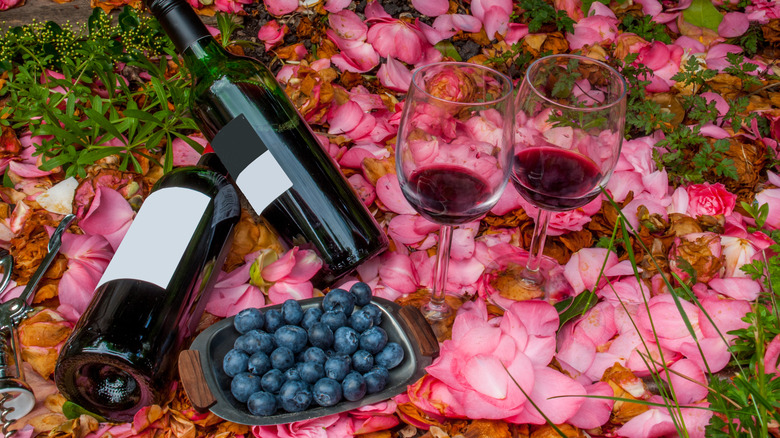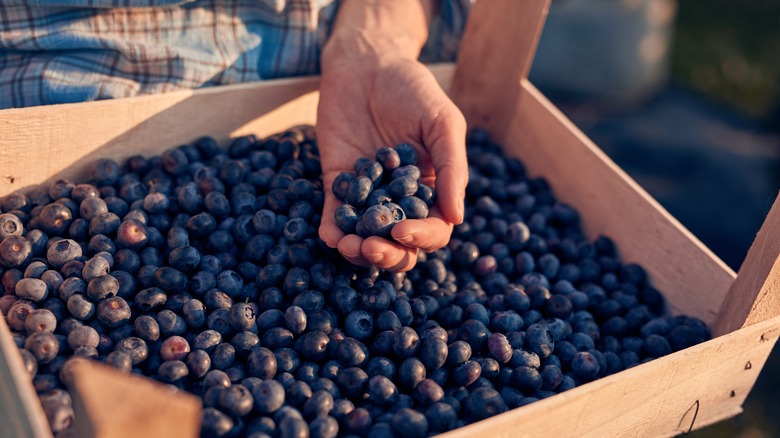This Is Exactly How Blueberry Wine Is Made
We've all heard of grape wine, but that's not the only fruit that helps make the decadent nectar. Grapes may be the most popular fruit to ferment into wine, but the same can be done with blueberries, and done well. There are a lot of intricacies to winemaking that completely alter the taste, like the fermentation temperature and the time it spends aging, but the general process remains the same for any fruit. Blueberries are fermented just as grapes are when making the common batch of wine, but they produce a more tart, unique taste.
The fermentation process is what turns sugar into alcohol (with the help of yeast) and with the naturally low sugar content of blueberries, it typically produces a more mellow sipping wine than its sweeter alternative of red grapes, which most red wines come from. On top of that, blueberries are packed with antioxidants so happy hour can be both fun and nutritious.
The idea of blueberry wine may seem revolutionary, and it was -– about 500 years ago. Back then, blueberry wine was often referred to as "sun wine" in its birthplace of Sweden. In the 16th century, the process was pretty hands-off and only involved the tasty fruit, sugar water, a bottle, and months of sunshine. Natural fermentation did the trick just fine, but over the years we've moved onto more efficient ways of winemaking. The core ingredients haven't differed, but modern winemakers now know that smashing blueberries introduces much more flavor than keeping them whole, as does multiple rounds of fermentation.
Producing the perfect blueberry wine all starts with the fruit
Producing the perfect blueberry wine all starts with the fruit. Harvesting the juiciest, freshest blueberries is what will give the wine that potent fruity flavor. The berries are then crushed just enough to extract their juices while keeping the seeds intact to avoid any bitterness. Following the same method as grape wine, crushed berries –- skins, seeds, stems, and all –- are then tossed into a vat with sugar and hot water to create a sugary fruit juice known as a must. Many producers will add extra sugar to not only sweeten the wine but also bump the ABV up, along with some other additions to build complexity like citric acid and tannins, the latter of which plays a key part in winemaking.
After about a week or so of consistently mixing the fermenting must, the thick, fragrant mixture is strained into a large glass or plastic airtight container, also referred to as a carboy. Next comes secondary fermentation, which takes place in said airtight container for up to a few months depending on the desired taste. The last step to blueberry wine is the racking and aging phase, which varies from batch to batch. During secondary fermentation, sediment builds up on the bottom of the container and racking is the technique of extracting the sediment from the wine to produce a perfectly smooth sip. Aging can take anywhere from a few months to a year, but the longer it ages, the smoother and more refined it becomes. The aging process can continue after bottling the wine for an even more complex glass. Blueberry wine can be served chilled like a Lambrusco, or at room temperature like a traditional red.

